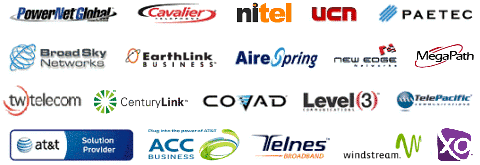T1 Lines versus Digital Subscriber Lines
At what situation must you improve your online service performance to a speedier and even more stable T1 line? When searching for possibly swapping out your existing DSL network, you have to take a look at a number of different issues. Financial damage materializing during the event of connectivity loss and dependability are the major factors to be considered when both small and large business functions. High-speed Internet is essential for a large number of companies to earn business via e-mail, video chatting, and voice-over-Internet telephone programs. Should an outage arise, your enterprise could possibly be affected on all stages.
Normally, a T1 connection can give a stable bi-directional performance of 1.5 Mbps. Then again, the bandwidth with which a DSL connection can work is entirely dependent on the mileage away from the DSLAM, that is the actual equipment box situated in your neighborhood by the telephone company. DSL's maximum reach is 18,000 feet. After that, the copper line's signal is too weak to faithfully transmit data.
Customer support is an additional facet that is different when comparing a T1 and DSL line. You will find a expert support department supporting a T1 line. This expert help assures a 99.99% quality of service, 24 hours a day, seven days a week, because the system is checked constantly. At the first indication associated with an outage, the technicians immediately get to troubleshooting to determine the reason behind the issue and repair it. On the other hand, DSL service demands that you take action by contacting customer service then waiting on hold until eventually a customer support representative is available to take your call and help you.
Price is the ultimate distinction between a T1 and DSL line. Based on the type of package you have, the price of DSL service may well be anywhere from $19 and $79 a month. As recently as a few years ago a T1 line cost was an average of about $1,000 per month. This happened to be outside the financial constraints of numerous businesses. Ever since then the cost of a T1 connection now is priced from the high $300's to the low $700's monthly, making it an option that small businesses and even home offices are more likely to look into. A T1 line is a bit more expensive than DSL, but what is the true cost for your business if your Internet connection goes down? If your organization definitely demands that your employees, phone calls, and electronic mail will always be up, it is mandatory that you ditch DSL and hold a reliable T1 line.
We are specialists in Troy Frame Relay. This page is a quick list of the services specifically offered by T1Market in Troy.
As we go forward, our goal is to continuously enhance our product offerings. We now offer enterprise items normally used by bigger corporations, namely: gigabit ethernet, MPLS network service, OC3, and cloud computing bandwidth delivered over a fiber optic backbone. Several of our carriers even provide complimentary managed Cisco routers for multi-year agreements. Primarily, our objective is to create a bond with you - our customer - that will last for years to come. Obtaining your trust is exactly what we do all the time. Saving you money on economical broadband services is exactly how we keep it.


